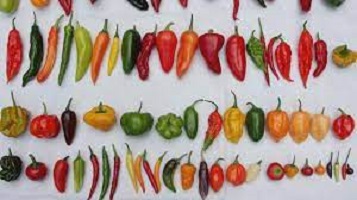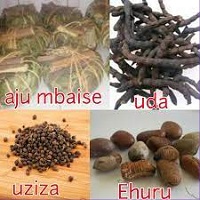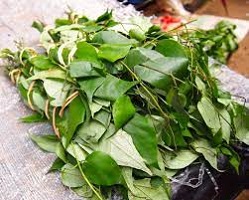Nigerian Peppers – Fresh Pepper Varieties in Nigeria & Benefits
Nigerian Peppers – Fresh Pepper Varieties in Nigeria & Benefits

Pepper is one of the most frequent spices and seasonings used in practically every Nigerian dish though classified as a vegetable plant.
Some people feel it has little nutritional benefit, while others disagree. Pepper, surprisingly, is high in vitamins and minerals while also being low in calories.
Pepper plants are perennials, but in most places beyond their natural habitat, they are grown as tender summer annuals. They are cultivated by either transplanting seedlings or direct seeding.
Related >>>
Table of Contents
Nigerian Peppers
It’s a strong powder made from ground peppercorns, and it’s used in Nigerian pepper soup spices and to improve the taste of other foods as a seasoning.
Due to the different types of Nigerian peppers available and globally, each pepper may have its peculiar nutrients and benefits.
Nigerian Pepper has a low-calorie count and is high in vitamins and minerals. However, in general terms, all the varieties of pepper have folic acid, fiber, potassium, phytochemicals, vitamins A and C.
Peppers are high in vitamins A and C, fiber, potassium, folic acid and come in a variety of shapes and sizes.
It includes all types of fleshy-fruited peppers, such as habanero, which is used as a condiment or powdered into a fine powder to be used as a spice, and mild bell peppers, which are consumed as vegetables.
Varieties of Peppers ~ Pepper Types
Peppers are reported to have around 4,000 different types around the world, with more being developed all the time.
We have compiled a list of the 20 most important ones into a useful reference for anyone interested in peppers.
- Carolina Reaper
- Habañero pepper
- Rocoto pepper
- Bell pepper
- Chili pepper
- Trinidad scorpion.
- Poblano pepper
- Jalapeno
- Serrano pepper
- Cayenne pepper
- Shishito pepper
- Piri Piri
- Piquillo peppers
- Anaheim pepper
- Bird eyes pepper
- Thai
- Chilaca
- Mirasol
- Gibraltar naga
- Fatalii pepper
Nigeria Peppers ~ The different kinds of pepper in Nigeria and benefits
In Nigeria, peppers are a common element in many dishes. Mostly every Nigerian dish is prepared with a spoonful or handful of pepper to provide heat and spice.
Check out some of Nigeria’s most popular peppers
1. Ata Rodo (Scotch Bonnets) ~ Nigerian Peppers
Scotch bonnet is grown In West Africa is commonly grown, in parts of Sokoto, Kebbi, and Zamfara. In Nigeria, we consume this pepper regularly. It also consists of yellow pepper.
2. Tatashe (Red Bell Peppers) ~ Nigerian Peppers
Bell peppers are tasty and can be eaten raw or cooked at a simmer. They are being used to add color to cuisine and have a milder flavor than ata rodo.
They come in a variety of colors, including red, yellow, orange, and green.
3. Dry Pepper (Chili or Piri Piri) ~ Nigerian Peppers
In African and Portuguese cuisines, dry pepper is commonly used. The dry pepper that Nigerians grind is made with Piri Piri.
4. Cameroon Pepper (Black Pepper) ~ Nigerian Peppers
Cameroon pepper is a Nigerian variety that is commonly minced and dried. It is quite spicy and should only be used in little amounts.
5. Jalapeno Peppers (Shombo) ~ Nigerian Peppers
Jalapeno peppers are green and red in color. Its fleshy thick walls provide a rich, unique spicy flavor that adds a vegetal accent to any meal.
The red ones are fully riped, while the green ones are unripe.
6. Cayenne Pepper ~ Nigerian Peppers
Cayenne peppers have the potential to set your mouth on fire. These chiles are 1¼ inch in diameter, and 6 inches long with a wrinkled appearance.
7. Habanero Pepper (Bird Pepper) ~ Nigerian Peppers
The hottest Nigerian pepper is the habanero. They are tiny chili peppers that are used to spice up a dish.
It is cultivated in Jos and parts of Kaduna. They contain undertones of sweetness beneath all that burning.
A habanero and a scotch bonnet pepper have a remarkable resemblance.
Benefits of Pepper
Pepper has preventive and therapeutic properties for a variety of diseases, including various types of cancer.
-
- Improves metabolism and healthy digestion
- Offers anti-inflammatory qualities
- Promotes a Healthy Heart
- Relieves Psoriasis
- It may help you from getting cancer.
- Migraine relief
- Fights fungus, colds, and influenza.
- Aids in the alleviation of joint pain
Uses of Pepper – How to Use Peppers in Cooking
Sauces, condiments, spices, and powders all contain peppers. Peppers can be used in a variety of dishes, including soups, spaghetti, stews, chili, stir-fries, and a variety of other dishes.
Some peppers are grilled and served as appetizers, while others are mashed so finely that you wouldn’t notice they’re there.
Pepper is used to season meats, fish, vegetables, and salad dressings, as well as to give flavor and spice to them. You can also add pepper to scrambled eggs.
Pepper Nutrition
Vibrant peppers are high in vitamins, minerals, and amino acids, all of which are necessary for human growth and health.
The specific nutrition of pepper varieties is a wonderful source of vitamin C, vitamin A, vitamin E, and vitamin B5.
Peppers include a variety of phytonutrients, such as flavonols, which are powerful antioxidants that may help to prevent diseases.
They’re also high in nutrients like potassium, phosphorus, and magnesium, as well as iron.
What Are The Side Effects of Pepper?
Peppers are also closely related to inflammation. Those with autoimmune diseases may be recommended to stay away from them. Some people may have developed a pepper allergy.
- Pepper may leave a scorching taste and irritate the stomach if consumed in excess.
- Coughing can be caused by inhaling pepper through the nose or mouth.
- Excess consumption has been known to cause death when it gets into the lungs by accident.


